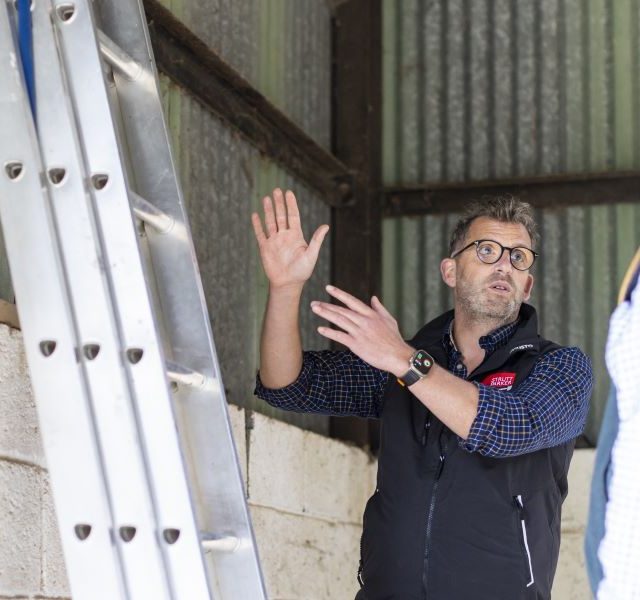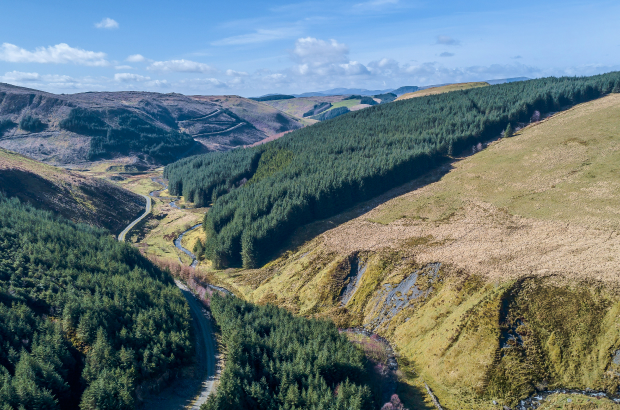Environmental Business Update | July 2025
Strutt & Parker’s Rural team brings you a roundup of the latest environmental and renewables news and views.
Environmental insights from our team
Long-term nature agreements – what landowners need to consider (England)
As interest grows in Landscape Recovery and similar long-term environmental schemes, land managers are weighing up the opportunities – and the long-term implications. Landscape Recovery is the most ambitious tier of Defra’s Environmental Land Management (ELM) schemes and involves individuals and groups collaborating to deliver a range of environmental benefits at scale. It is a scheme which has the potential to show how integrated, multi-functional land management can boost biodiversity and improve climate resilience, while still supporting resilient, productive farming. However, there are a number of practical aspects to consider, including things like the potential impact on capital values, long-term obligations, access, insurance, and how these schemes might affect the wider business. Read our full blog post on this topic or contact Hannah Bloxham.
Reviewing natural capital opportunities on estates (UK)
A Natural Capital Appraisal is a strategic opportunity mapping exercise that looks at the natural assets on an estate – such as soil, water, habitats, and biodiversity – to uncover how they can deliver greater environmental, economic, and social value for the landowner. We have carried out several of these reviews and are finding that well-managed natural capital can increase an estate’s value, drive new income streams, boost its attractiveness to investors (including banks) and enhance its reputation. It can also improve climate resilience, by focusing on soil health, flood management and measures which improve drought tolerance. If you would like to know more about how you can position yourself at the front of a fast-moving environmental economy, contact Joel Paterson.
Policy & legislation
Spending Review outcome better than feared for nature-friendly farming (UK)
The rumours circulating before the Spending Review were that Defra’s budget could be cut significantly. It has therefore come as somewhat of a relief that while there has been a reduction, farmers and land managers will benefit from an average of £2.3 billion a year through the Farming and Countryside Programme, which includes the Environmental Land Management (ELM) schemes. An additional £400 million has been earmarked for additional nature schemes, including those for tree planting and restoring peatlands. What is not yet clear is how the funding will be split between the Sustainable Farming Incentive, Countryside Stewardship and Landscape Recovery schemes. Further details of the ‘reset’ SFI are expected later this summer. For more details contact our rural research director Jason Beedell.
Renewables developers seek to secure land rights ahead of Gate 2 deadline (UK)
As part of the Government’s Clean Power 2030 Action Plan (CP30), the Grid Connections queue is undergoing a significant change. The order/date of connection of each planned project is under review, with sites that have hit certain milestones – land rights confirmed (with signed option in place), planning surveys underway and planning permission received – moving up the queue. Sites that have not hit these milestones will be either pushed to the back of the queue, with a connection date of around 2040, or removed all together.
This is known as the Gate 2 process and each local Distribution Network Operator has a different Gate 2 application window. However, they are all falling this summer which has resulted in a huge amount of activity by agents, lawyers and developers to get to the signed option stage before the Gate 2 window closes.
Developers do continue to look for new sites, to ensure they have a pipeline of projects for the late 2030s and beyond. Contact Anthony Field or Nick Bramley if you would like to discuss the opportunities.
Two consultations on changes to BNG regime (England)
Two consultations have been published on changes to the Biodiversity Net Gain regime, which are likely to have implications for demand for BNG units. The first focuses on improving the implementation of BNG for minor, medium and brownfield developments, which suggests exempting developments of up to nine houses from the requirement and simplifying the rules for developments up to 49 houses. The second consultation sets out a framework for introducing BNG for nationally significant infrastructure projects (NSIPs) from May 2026.
New strategies unveiled for onshore wind and solar growth (UK)
The Government has unveiled an Onshore Wind Taskforce Strategy report which sets out 40 actions to increase the amount of energy produced in the UK from wind. This ties in with the target set in the Clean Power 2030 Action Plan (CP30) of almost doubling the UK’s onshore wind capacity by 2030. The strategy comes hot on the heels of a Solar Roadmap which includes more than 70 actions to accelerate solar deployment from over 18GW to 45-47GW by 2030. The roadmap sets out plans to increase rooftop deployment – both on residential homes and commercial premises – while at the same time increasing large-scale solar farms, so they account for up to 0.4% of the UK’s total land area (from 0.1% now).
Consultation on raising integrity in voluntary carbon and nature markets (UK)
The ability of landowners to unlock future income streams from carbon credits and biodiversity projects relies on them being able to demonstrate to buyers that they are of a high quality. So the Government’s recent consultation on raising integrity in voluntary carbon and nature markets is important.
It seeks views on six principles, which are:
- Use credits in addition to ambitious actions within value chains.
- Use high integrity credits.
- Measure and disclose the planned use of credits as part of sustainability reporting.
- Plan ahead – regulated financial institutions should work out whether there is a role for credits in their transition plans.
- Make sure any green claims are accurate and use appropriate terminology.
- Co-operate with others to support the growth of high integrity markets.
Update to Woodland Carbon Code (UK)
The planned update – this will be version 3 – reflects the commitment to continuous improvement of the Code and ensuring it remains aligned with global standards. A consultation ended on 10 June and the new version was scheduled to be launched on 1 July, with a three-month transition period until the new Code applies in October. Proposals include:
- Providing clearer information on requirements and guidance.
- Updating rules to encourage more projects on crofted land.
- Changing the minimum duration for projects in line with international standards.
- Updating data on the additionality cashflow spreadsheet following recent research and consultation.
Please contact Sasha Laing in our Forestry team if you would like to discuss the Code or a carbon project.
Grants & support
Changes to 2026 greening rules in Scotland (Scotland)
The Scottish Government has published details of what farmers have to do to receive an Enhanced Greening payment, which is a supplement worth about 30% of the Basic Payment Scheme (BPS). It is intended to reward climate and environment friendly practices.
Key updates include:
- Removal of the exemption for arable growers that have 75% or more of their claimed area in grassland, if they have 15 ha or more of arable crops.
- The EFA fallow option can no longer be stubbles. There must be one of the following: a diverse ground cover crop; a wild birdseed mix; a wildflower mix; or a diverse temporary grassland mix.
- Field margins must now be at least 3 m wide with a diverse grass sward containing pollen-bearing plants.
- Hedges face stricter rules: trimming is banned 1 March – 31 December, and the size of gaps allowed has narrowed from 20m to 5m.
While many may find the changes an inconvenience at first, they do offer some long-term benefits. For example, utilisation of cover crops within fallow stubbles will improve soil structure and can fix nitrogen for the next crop. If you would like to discuss the changes and how to apply them, please contact Stephen Whiteford in our Farming team.
Sustainable and regenerative agriculture: A new code of practice (Scotland)
The Scottish Government has unveiled a new Code of Practice on Sustainable and Regenerative Agriculture. The Code has been written as a guidance tool for farmers and crofters and does not introduce any new legal obligations. Instead, it highlights the types of regenerative actions they could adopt and the benefits that they might deliver to their business. For more details contact Stephen Whiteford.
Higher Level Stewardship (HLS) payment rates increased (England)
Payment rates under Higher Level Stewardship have been increased by around 34% for each option, bringing them more in line with rates paid by the Countryside Stewardship and Sustainable Farming Incentive (SFI) schemes, but still below them for many options (although not all). The rates had not been increased for 10 years. The increases will lead to an additional £30m being paid to agreement holders and will be applied to 2025 claims, which are paid from December 2025 onwards.
Climate change adaptation & mitigation
UK arable farmers lost £1bn in 2025 because of climate change (UK)
The wet weather experienced over the winter of 2024 led to more than £1 billion being knocked off arable farm incomes, according to Defra’s latest Total Income from Farming (TIFF) statistics. The 2024 wheat crop suffered due to wet planting conditions in both winter and spring, resulting in a 20% drop in the total wheat harvest and variable quality. The Energy and Climate Intelligence Unit (ECIU) has warned that extreme weather events will push more of farming’s finances to breaking point. It estimates that the driest UK spring for 50 years could also mean the 2025 harvest will be another poor one. Our own analysis is starting to point to the fact that the impact of climate change could be more significant financially than the loss of Basic Payments or the forthcoming changes to inheritance tax.






